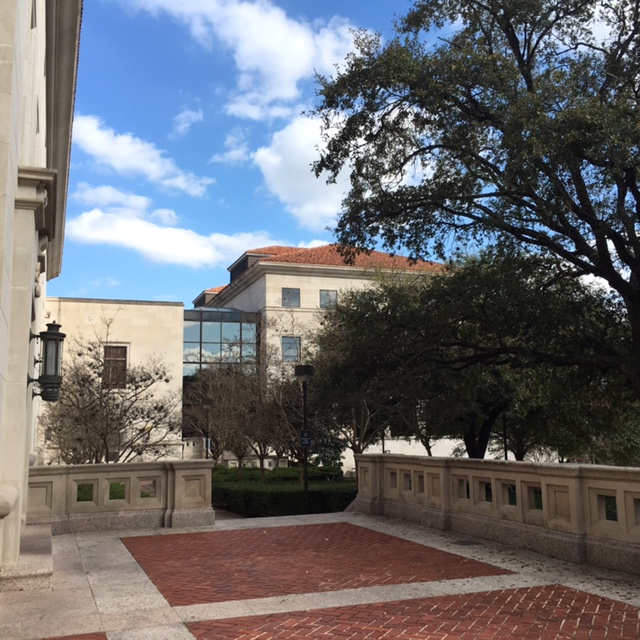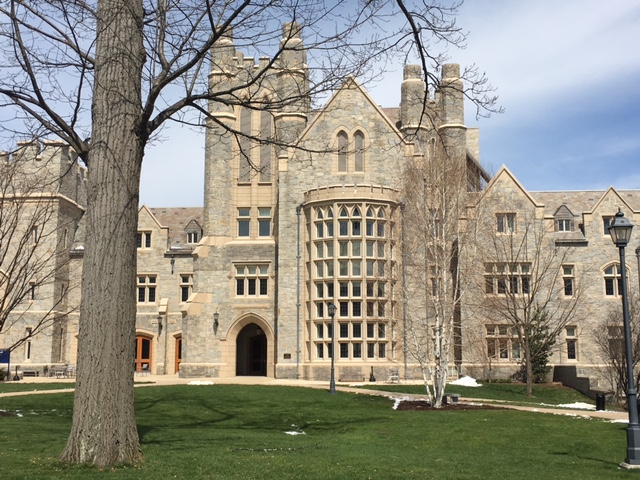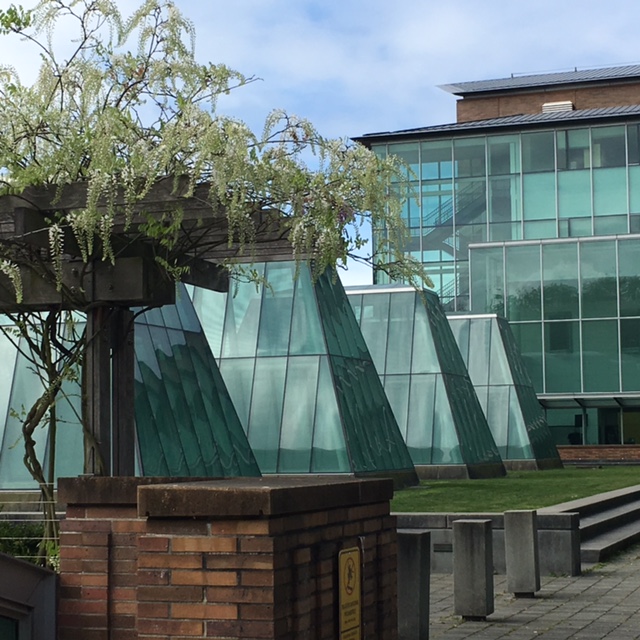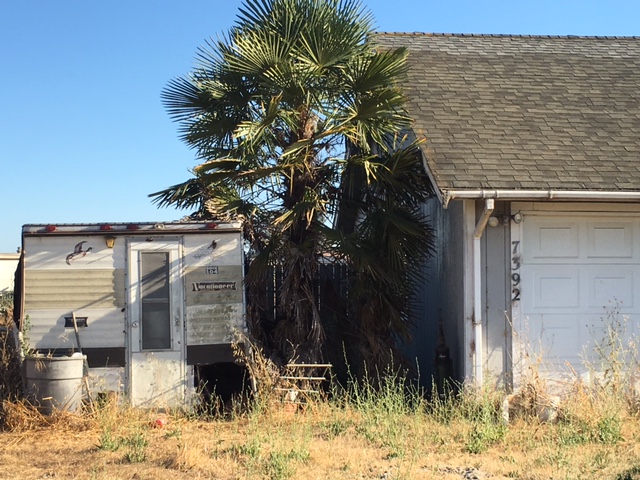Lawdragon Campus hit the road in 2016 to visit all the nation’s law schools. Our goal was to get a real perspective on legal education – beyond the headlines and folks writing about law school who’ve never set foot in Kansas. We were inspired, amused, sad and joyful at what we found.
We’ll be sharing our reviews of each school in the months ahead on our Road Trip page, as well as some big-picture thoughts on What is a Law School, Why is Being Dean a Bad Job for Most, and What’s the Future of Legal Education.
For now, here are some lasting memories from our unforgettable journey into the heart of U.S. legal education.
University of Texas Law School is tops for us – why? It’s at the forefront of the student-centric flip in legal education, led by Dean Ward Farnsworth. Also – and this gets complicated, but you can read here for a preview – there is no law school that can touch it within 1,154 miles in any direction. And it’s #1 in a state that mightily matters, and which it dominates. While a bit geeky, the ‘protractor’ test is one you’ll hear about again from us. For 98 percent of law school graduates – those not among the ultra-elites being courted by Harvard, Stanford and Yale – you should seriously consider going to law school in the state and region where you are going to practice. You will be making business contacts with your fellow law students, and have greatly improved odds of networking your way into a better job with local alumni. Texas places better than just about any school outside the Northeast in the N.Y.-D.C. corridor, but it cleans house in Texas.
Can we stop with U.S. News’ law school rankings already? They also rank the best 10 hotels in the Caribbean, the best used compact trucks under $20,000; and the best hospitals for gynecology, for heaven’s sake. This discussion is tired, but persists. Don’t choose your law school based on a ranking. Why? Because if you are a student who wants to practice in California, it could lead you to go to University of Iowa rather than the slightly lower-ranked University of California at Irvine, or if you want to practice in New York, you could be wandering around Bloomington, Ind., rather than making wonderful contacts at Fordham, approximately 15 blocks from Skadden. Put the U.S. News down, figure out where you want to work, visit law schools there and make your best deal. You start your law career the day you apply to law school. Don’t punt on the first three years.
Duke Law School was an inspiration five hours after Donald Trump was elected president. This is not a political statement in any way, but after staying up watching the election until 4 a.m. and results that stunned at least the prognosticators, we didn’t know what to expect going into the finest law school in the South that morning. With Communication Director Andrew Park we slogged through a day that at least outside the school was disorienting. Inside, the law did its job. At a student lunch on “Exploring the Freedom of Religion,” we listened to Asma Uddin, the director of strategy for the Center for Islam and Religious Freedom, alongside two other panelists, trying to piece together what is to come. We had a long talk with former federal judge and longtime Dean David Levi. We talked about Duke, his roots in the law and lessons from his father, Edward Levi – the attorney general credited with restoring order after Watergate – and his own passion for access to justice. We left Duke knowing the law will activate students to engage in issues about which they are passionate, and provide the blueprint for how our society handles change.
Yale Law School. Yale is many, many things – among them the leading producer of legal academics and (weighted) U.S. Supreme Court justices. Is it tops in producing practicing lawyers? Debatable. But you can’t walk through its doors without understanding the transcendence a life in the law can bring. And while you’re told that Bill and Hillary met in the wondrous law library, it’s just as inspiring to see the names of victims of police shootings hand printed and posted to the staircase wall, alongside drawn pictures of notable female graduates to complement the bewigged white men in the glorious stained glass. (Also, I’d go to Yale just for the nearby apizza.)
Connecticut has just three law schools (the fourth, Litchfield, closed in 1833.) We drove to Hartford, the so-called insurance capital of the world, as well as the state, to see UConn Law School and visit with Dean Timothy Fisher. He is one of a handful of deans tapped because of the real-life law practice experience he brings to a school in a competitive economy without a particular niche. The Campus is a short drive from downtown and housed in the former Hartford Seminary for a bit of a Harry Potter feel. The first graduating class of the school, which started out with practical roots downtown, included J. Agnes Burns, who was the first woman admitted to the Connecticut bar and the first woman to appear before the state’s Supreme Court. We also appreciated watching residents of the town come into the law library and receive gentle guidance on where to find legal help and information. (We will continue this thread in the Bottom 10, but let’s just say that law schools that hide behind security guards who menace rather than help may be at odds with the mission of a law school. For where do students learn what the law is but in a school that opens its doors to those who need the law?)
The University of San Diego School of Law, too, has turned to a former Big Law partner, Dean Stephen Ferruolo, who’s working to make sure the school’s status as tops in San Diego translates to jobs. Like Fisher, Ferruolo has the difficult task of spinning jobs from a school that’s easily tops in its city, but swimming in a sea of competition from the larger region. Both schools offer excellent education in great surroundings and are sensitive to price. But both deans know they have a one-word mission: jobs. What leadership is in the new world of law schools is an important question, and we’ve seen deans that exemplify every possible strategy: academic (pretend the world hasn’t changed); fundraiser (accept the world has changed and deal with unhappy faculty); co-deans (almost always a bad idea); and pipeline to jobs. We know of successes and failures in each category, and have a true appreciation for the Hail Mary of trying to run a law school for the business many students will be entering. (And, important side note, there are maybe a dozen truly splendid deans throughout the country who embody their schools, are respected intellectuals and work beautifully with fundraisers, employers and alumni, while commanding the respect and commitment of cutting-edge and thoughtful staffs and faculty. But they are rare.)
So many schools have undergone physical transformation with capital campaigns, constructing beautiful new buildings or transforming their old building into a marvelous amalgamation of old and new – symbolizing nothing so much as the law’s own progress. The University of Wisconsin‘s transformation comes to mind, as do the beautiful centers at the University of Washington (the William H. Gates Hall) and Stanford (with its William Neukom faculty center and Munger housing). Others of note include New York Law School, the University of Baltimore School of Law, Loyola Law School in Los Angeles, University of Oregon, University of California at Davis, the University of Utah and, of course, Duke.
Shout out to Notre Dame. It places heavily in Chicago, but Indiana is still a tough market, particularly with four law schools. Putting that aside, we totally caught South Bend fever walking its campus and the beautiful halls of the law school. (Four Hoosier sidenotes: Hoagy Carmichael wrote the music to “Stardust” and “Georgia on My Mind,” after graduating from UIndiana, Bloomington; See ‘lost in Valparaiso’ below; as a native of Central Illinois I can’t in good conscience say anything good about Indianapolis, but there is a special magnetism to law schools educating students a few blocks away from state capitols, and the University of Indiana Law School – McKinney is a great illustration. Finally, I visited Indiana Tech a few weeks after its closure was announced. However misguided its conception, the sight of students leaving law school as the sun set on the Midwestern plains with plans to come in early to study the next day – at a school they know is closing – was heartbreaking.)
Lost in Valparaiso is a serious issue for almost every law school. Pro tip: you need to have the actual street address of your law school on your website and it needs to be searchable by Google and other search engines. Our self-imposed rules of the Law School Road Trip required us to drive to and from each and every school in the country to better appreciate the distance – geographic and otherwise – a student traverses in his or her choices. We captured that journey over more than 130,000 miles, from San Francisco’s Golden Gate University Law School to talk with Dean Rachel Van Cleave and observe a tremendous moot court competition (won by American University), to Georgetown, to meet with Dean William Treanor and be amazed yet again at the power and innovation of the school he leads. And we did so with quite a lot of navigation city-to-city by Mapquest (and Waze, hello officer!). But when it comes to finding the actual school (as opposed to the campus, or somewhere somewhat nearby, Google Maps is by far the most reliable way to locate an individual law schools).
But law schools, you cannot write off the fact that more than 50 of you have bad addresses on your site to search engines. Valparaiso is only the example here because it was the first time we got seriously lost looking for a law school. Not only was the address listed incorrect, the dean’s address on her CV was (and still is) incorrect, and a visit to the Valparaiso University Administration building yielded ‘dunno’ from two really sweet employees who had no clue where to find the law school on the mile-square campus. We drove to the police station and asked – and they told us where to find it. While Valparaiso has since fixed this issue, and has its correct address on its website, the larger issue remains. This is a question of access, folks, and if you don’t start teaching students before they come through your doors that access to justice means being able to find the building, I don’t know what to say.
This country has a remarkable wealth of law schools. Only Alaska does not have one, and with a satellite from Seattle University Law School a law school is on the way (and so will we be, once it gets a bit warmer!). The media and profession often talks about ‘law schools’ as a monolithic approach to legal education. Nothing could be farther from the truth. We have historic Ivy League schools, traditionally African-American law schools established in an era of segregation and still struggling to hold on; California’s 54 law schools, including 33 that are not approved by the ABA and include everything from a school operating in the desert out of the back of a lawyer’s office, to online schools; there are for-profit (and mostly still inferior in providing education) trying to make that model work; and state-funded schools, some of which have gone from beacons to bust at the whim of state legislators. Too, there are religiously affiliated schools that are often dismissed, but that provide legal education to a substantial number of future lawyers.
It’s our hope our Road Trip will contribute to a more intelligent discussion about legal education and its vital role in strengthening the legal system of this country. And, that it will provide a basis for a greater appreciation of the role of schools known and less so in providing the future judges, prosecutor, general counsel, innovators, defenders, private lawyers, entrepreneurs – and even songwriters.
That’s just a few of our postcards from the road, where we’ve roamed scary fields outside Gilroy, Calif. (thank you Silicon Valley Law School, which has moved but has a bad, way-past sketchy address listed with the State Bar of California; seriously you may get shot if you go out there) to the heavenly halls of Yale and every school in between. Follow us on Facebook and @lawdragoncampus for reports on every school in the U.S. and profiles of law students, recent grads and deans.




